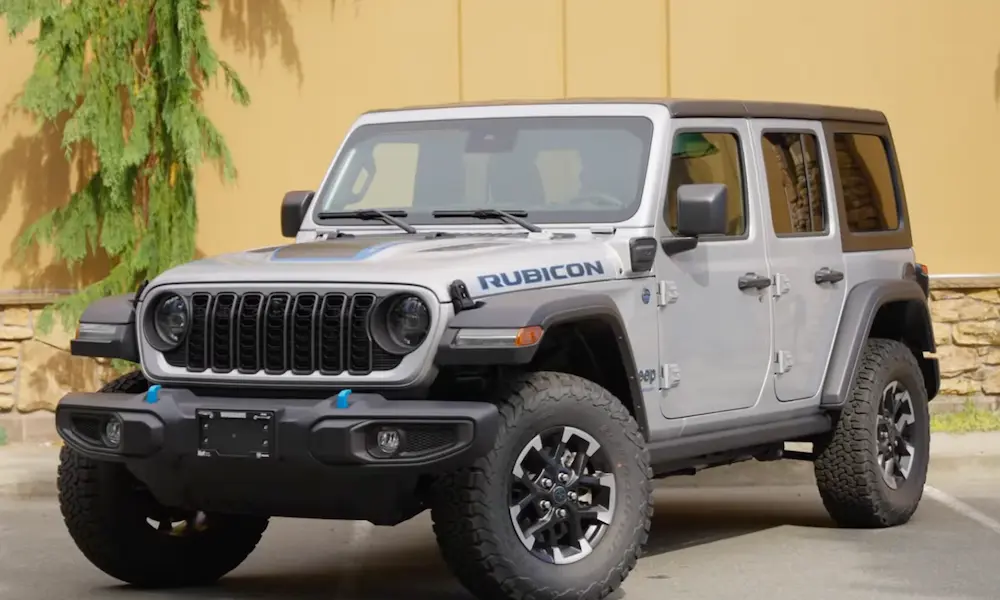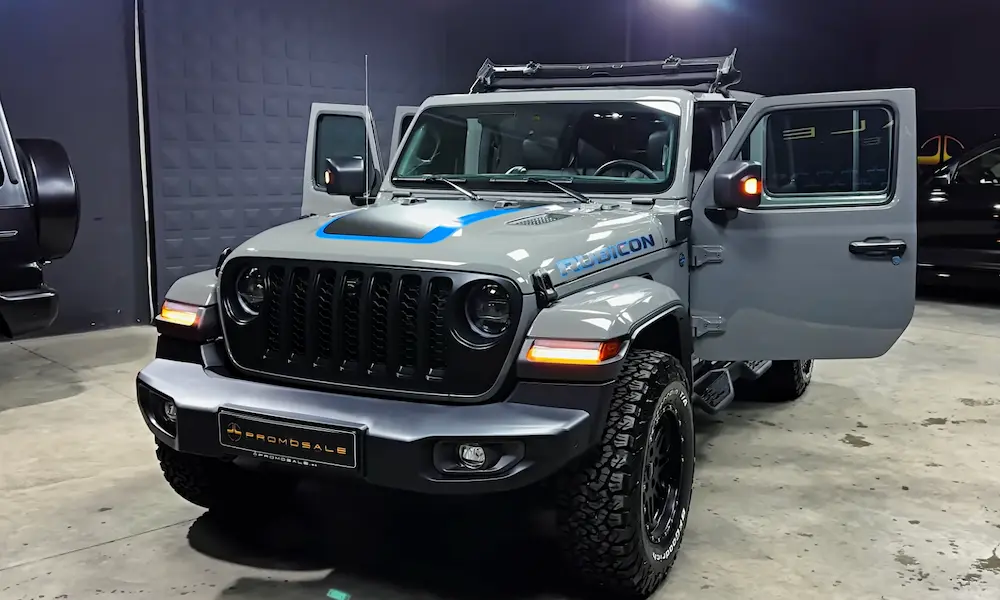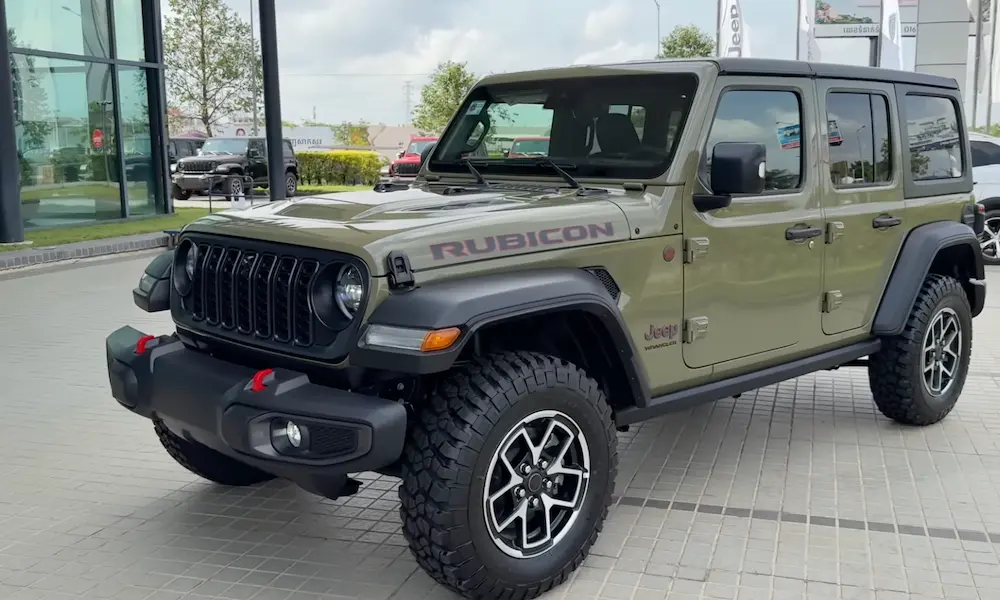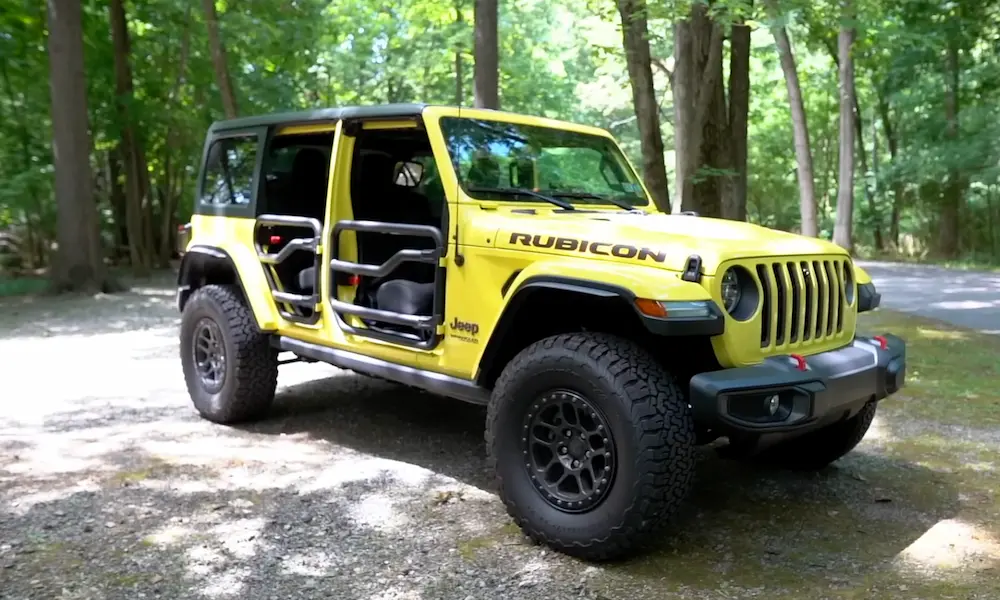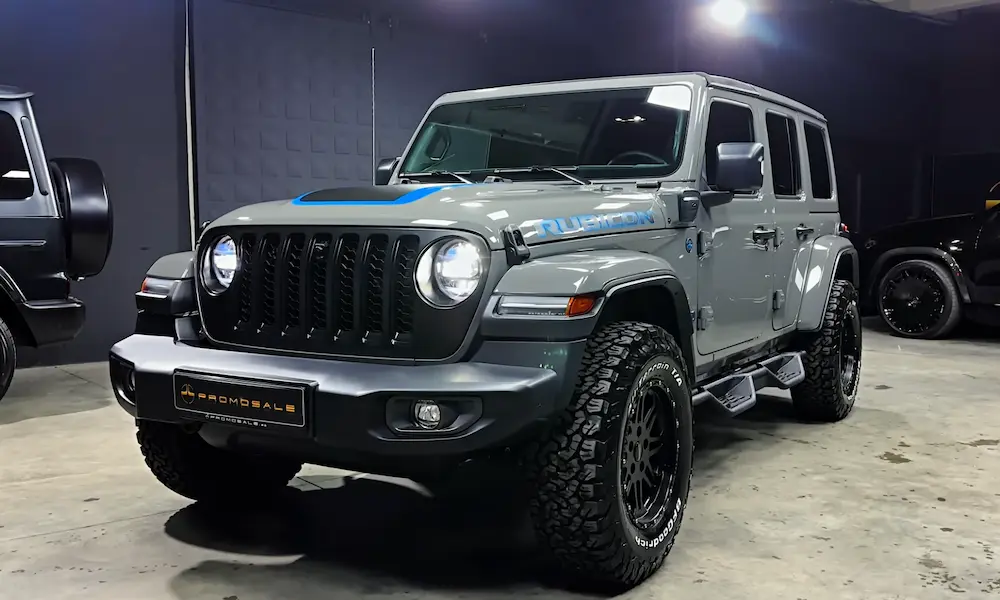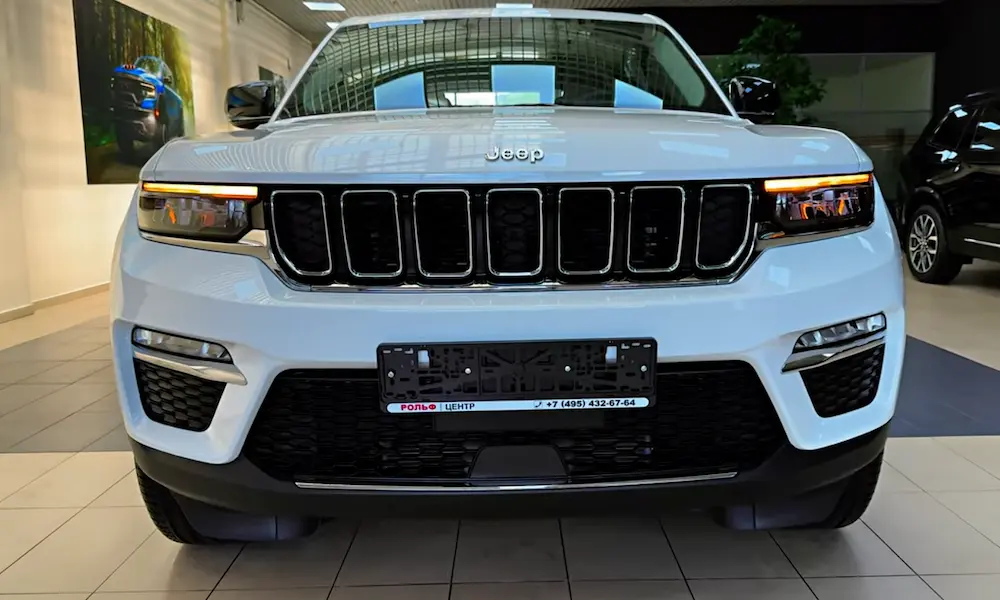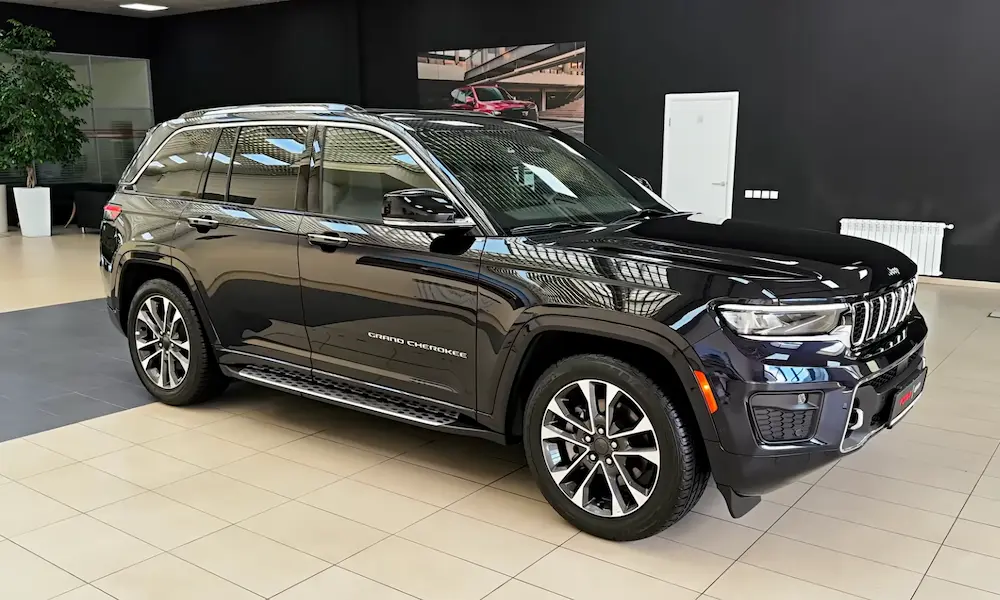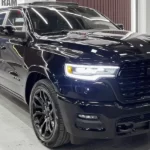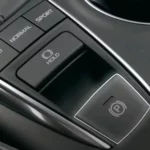You’re cruising down the highway in your beloved Jeep Wrangler when suddenly—WHAM—you hit a small pothole. The steering wheel starts violently shaking in your hands, the front end shivers like it might tear apart, and your knuckles turn white as you desperately try to maintain control. This isn’t just any vibration; you’ve just experienced the infamous “death wobble.”
What Exactly Is the Jeep Death Wobble?
The death wobble isn’t just your average steering wheel shake. It’s a violent, uncontrollable oscillation that starts at the front wheels and rips through your entire vehicle. Unlike normal vibrations that might feel annoying but manageable, death wobble feels exactly like its ominous name suggests—like you’re fighting for control.
This phenomenon typically strikes when you’re traveling at highway speeds (usually between 45-75 mph) and hit a bump, pothole, or expansion joint. The steering wheel jerks violently side-to-side, making the entire front end of your Jeep shake until you slow down below about 45 mph.
What makes death wobble different from other vibrations is its intensity and the fact that it won’t stop until you reduce your speed. It’s not gradually annoying—it’s immediately terrifying.
Why Jeep Wranglers Are Prone to This Issue
The root of this problem lies in the Wrangler’s DNA—specifically, its solid front axle (SFA) design. While this setup delivers the legendary off-road capability Jeep owners love, it comes with an inherent vulnerability.
Here’s why Jeeps are particularly susceptible:
- Solid Front Axle Design: Unlike independent front suspensions found in most vehicles, Wranglers use a solid front axle where both wheels connect to the same rigid beam. When one wheel hits a bump, the entire axle is affected.
- Interconnected Components: The steering and suspension systems in a Wrangler involve numerous connected parts, creating multiple potential failure points.
- Off-Road Use: Many Wranglers see tough terrain that accelerates wear on critical components.
According to NHTSA investigations, this issue has affected thousands of Wrangler owners, with over 265 complaints filed for 2018-2019 models alone.
The Main Culprits Behind Death Wobble
1. Track Bar Problems
The track bar (also called the Panhard rod) is often the primary suspect. This crucial component keeps your axle centered under your Jeep and prevents side-to-side movement.
When the track bar bushings wear out or the mounting bolts loosen, the axle can shift laterally, initiating the death wobble. In fact, studies show that track bar issues account for over 70% of death wobble cases.
2. Worn Ball Joints and Tie Rods
These components connect your steering system to your wheels. When they wear out, they develop play (unwanted movement), allowing your wheels to move in ways they shouldn’t.
You can test for worn ball joints by jacking up your Jeep and trying to rock the wheel vertically and horizontally—any noticeable movement is a red flag.
3. Degraded Control Arm Bushings
Control arms position your axle fore and aft. The rubber bushings at their mounting points absorb road vibrations, but when they deteriorate, they allow unwanted movement that can trigger the wobble.
Look for cracked rubber or signs of fluid leakage around these bushings as early warning signs.
4. Improper Wheel Alignment
A Jeep with incorrect alignment, particularly caster angle (the forward or backward slope of the steering axis), is more prone to death wobble. Proper caster (4-6 degrees) helps your steering self-center after turns, which counteracts oscillations.
5. Steering Stabilizer Misconceptions
Many shops will recommend replacing your steering stabilizer (essentially a shock absorber for your steering system) to fix death wobble. This is often a band-aid solution that masks the real problem.
As explained by experts, a steering stabilizer can temporarily dampen the symptoms, but it won’t fix worn components that are causing the issue.
How to Diagnose Death Wobble in Your Jeep
Before throwing parts at the problem, take a methodical approach to diagnosis:
Visual Inspection First
- Park on level ground and visually inspect all front-end components
- Look for obvious signs of damage: rusted or bent parts, leaking fluid from bushings
- Check for loose bolts, particularly at the track bar mounts
- Examine tire wear patterns (uneven wear often indicates alignment issues)
The “Dry Steering” Test
With your Jeep stationary and engine off, have a friend slowly rotate the steering wheel back and forth while you crawl under (safely!) to observe the steering components. Any visible play or movement where parts connect is problematic.
Track Bar Movement Check
With help from a friend, have them turn the steering wheel slightly while you observe the track bar mounts. Any visible movement between the track bar and its mounting brackets indicates a problem.
Professional Diagnosis
If you’re not comfortable performing these checks, a qualified mechanic can diagnose death wobble through:
- Measuring component wear with specialized tools
- Performing a comprehensive alignment check
- Conducting a road test to recreate and identify the issue
DIY Fixes vs. Professional Repairs
When You Can DIY
If you’re mechanically inclined, you can tackle some death wobble fixes yourself:
Track Bar Bolt Torquing: Often, simply tightening track bar bolts to factory specs (typically around 125 ft-lbs for JK Wranglers) can eliminate play.
Basic Bushing Inspection: You can visually check bushings for deterioration and replace the obvious culprits.
Tire Balance and Rotation: Ensuring proper tire balance and rotation can eliminate some vibration issues.
Cost Comparison for Common Repairs
| Component | Parts Cost | Labor Hours | Total Cost Estimate |
|---|---|---|---|
| Track Bar Assembly | $80-300 | 1.5-2 hrs | $200-600 |
| Ball Joints (Pair) | $100-400 | 2-3 hrs | $300-700 |
| Control Arm Bushings | $50-150 | 2-3 hrs | $250-450 |
| Full Alignment | $100-250 | 1 hr | $100-250 |
When to Seek Professional Help
You should visit a Jeep specialist or off-road shop when:
- You’ve tightened everything and still experience wobble
- The problem persists after basic DIY fixes
- Your Jeep has been lifted/modified
- You don’t have proper tools for suspension work
- Safety is your top concern (which it should be!)
Legal Aspects: What Jeep Has Done About It
Death wobble has been such a widespread issue that it’s led to serious legal consequences for Jeep’s parent company, FCA (now part of Stellantis).
Class Action Lawsuits and Settlements
In 2023, a class action settlement extended warranties to 8 years/90,000 miles for steering damper replacements on affected vehicles, with reimbursement available for out-of-pocket repairs.
The lawsuit alleged that FCA knew about death wobble risks but prioritized cost savings over transitioning to independent front suspensions. Internal documents revealed that engineers had flagged harmonic resonance issues during JL Wrangler development.
NHTSA Investigations
The National Highway Traffic Safety Administration has conducted multiple investigations into the Jeep death wobble phenomenon. In 2019, NHTSA launched a formal investigation after receiving hundreds of complaints about 2018-2019 Wranglers.
Many critics argue that the official response has been insufficient, who believe NHTSA should have taken stronger action to address what they consider a serious safety defect.
Prevention: How to Keep Death Wobble Away
The best approach to death wobble is preventing it in the first place. Here’s how to keep your Wrangler running smoothly:
Regular Maintenance Schedule
Implement this preventative maintenance routine:
Monthly Checks:
- Inspect track bar and control arm bolts for tightness
- Look for any visible fluid leaks around bushings
- Check tire pressure and look for unusual wear patterns
Every 6 Months:
- Test ball joints by lifting the axle and checking for play
- Lubricate tie rod ends and other greased components
- Inspect control arm bushings for deterioration
Annual Maintenance:
- Get a professional alignment, especially after off-roading
- Have a specialized Jeep shop inspect all front-end components
- Replace any components showing wear before they fail completely
Upgrades That Actually Help
If you’re looking to beef up your Wrangler’s front end, consider these effective upgrades:
Heavy-Duty Track Bars: Upgraded track bars with solid heim joints eliminate the flex and play of OEM bushings. Options like the Teraflex Nexus use stronger materials and better designs to limit unwanted movement.
Caster Correction Kits: If your Jeep is lifted, adjustable control arms can help optimize the caster angle, improving stability at highway speeds.
Quality Replacement Parts: When you do replace components, consider going with higher-quality aftermarket parts designed specifically for heavy off-road use rather than basic OEM replacements.
Recent Improvements in Newer Wranglers
Jeep hasn’t ignored the death wobble problem. Recent model years have seen engineering improvements aimed at reducing its occurrence:
The 2024 Wrangler refresh includes reinforced track bar mounts and hydroformed control arms designed to reduce flex. Early testing shows a significant reduction in wobble incidents, though long-term reliability data is still accumulating.
Engineers are also working on electronically controlled adaptive damping systems that could detect oscillations in real-time and apply counteractive forces—potentially resolving wobble without requiring mechanical overhauls.
What to Do if Death Wobble Strikes While Driving
If you experience death wobble while driving, here’s how to handle it safely:
- Don’t panic or slam on the brakes – This could cause loss of control
- Firmly grip the steering wheel with both hands
- Gradually reduce speed by easing off the accelerator
- Apply brakes gently once the oscillations begin to subside
- Pull over safely when you can
- Inspect your Jeep for obvious issues before proceeding
- Drive at reduced speed to your destination or repair shop
Remember: Death wobble is scary but manageable if you stay calm and reduce your speed.
The Road Ahead: Is Death Wobble Ever Going Away?
The death wobble phenomenon is deeply tied to the solid front axle design that gives Jeep Wranglers their legendary off-road capability. As long as Jeep maintains this design philosophy, some form of this issue will likely persist.
However, engineering improvements continue to reduce its frequency and severity. Jeep’s commitment to the solid axle design means they’re constantly working to mitigate its drawbacks while preserving its benefits.
For owners, the key is awareness and prevention. Understanding what causes death wobble, regularly inspecting vulnerable components, and addressing small issues before they become big problems will help you enjoy your Wrangler’s capabilities without the white-knuckle highway experience.
With proper maintenance and timely repairs, your Jeep can deliver thousands of miles of adventure without a single wobble—keeping the “death” part of death wobble nothing more than a dramatic name for a preventable problem.


